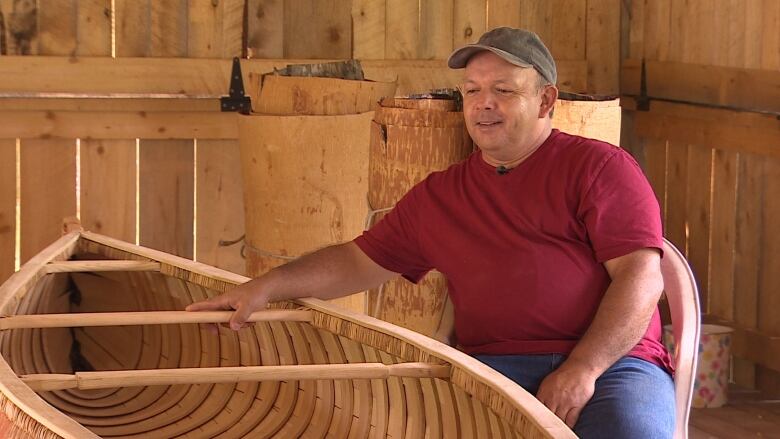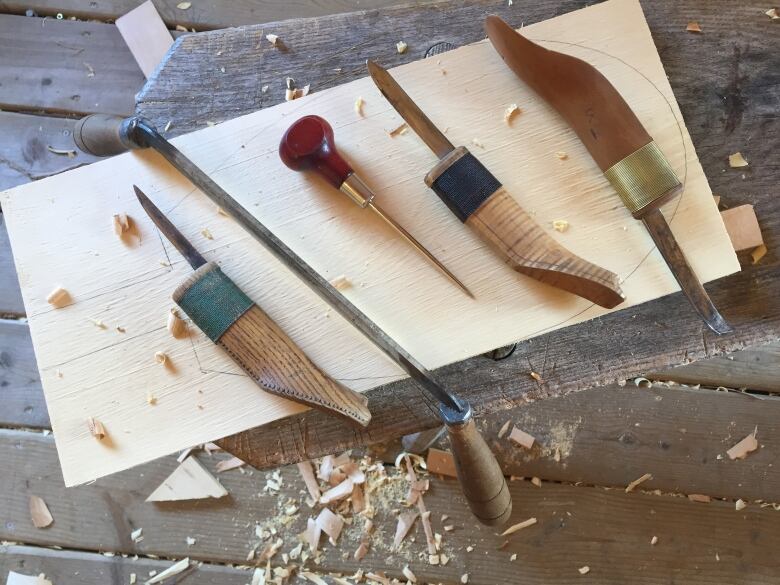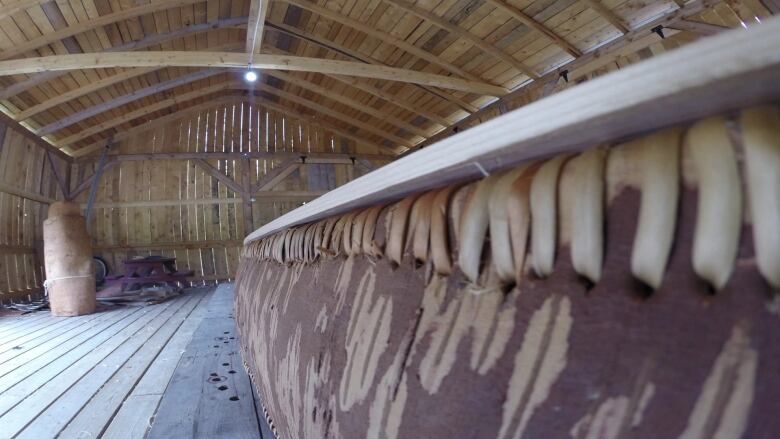Mi'kmaq artist builds traditional birchbark canoe in Bear River
Todd Labrador taught himself the traditional craft and now hopes to share his skills with others

Todd Labrador chisels a piece of cedar, shaping it to nestle into the bow of a birchbark canoe that's he's spent the past three months shaping by hand on the Bear River First Nation.
This week, the Mi'kmaq artist is putting the finishing touches on the canoe in the same community where he builthis first one more than a decade ago.
He hopes by working on it in the First Nationhe'll help the next generation discover the traditional craft.

Little helpers
People of all ages often drop into Labrador's workshop, with some lending a helping hand.
It's not uncommon to see a toddler from the nearby daycare following his movements, mimicking the way he stitches spruce root through a piece of bark.
"I'm hoping that by being here and having some of the little ones come in, walk around, maybe that will spark a little interest that one day somebody else will be building canoes here," saidLabrador.
Community project
Bear River's chief approached the canoe builder, who is anAcadia First Nation band member and grew up on the Wildcat reservein Queens County, last summer about the project. It's part of Seven Paddles, a community initiative that aims to strengthen people's connection to their history and culture.
Birchbark canoes certainly don't come with an instruction manual. Labrador has spent the past decade exploring the craft working from photos and consulting with elders.

Labrador's father, who shared his traditional knowledge with his son,passed away before Labrador finished his first canoe. Buthe says his fatherand ancestor'sspirits continues to guide his work.
He uses tools similar to the ones his ancestors worked with.His own great grandfather, Joe Jeremy, was a master canoe builder. Another famed Mi'kmaq builder, Malti Pictou, did the same in Bear River.
"Some of the things I do now, with birchbark canoes, I've actually learned from looking at Malti's canoe, how he did certain things. I've incorporated some of Malti's techniques into what I do now," he said.
Long history in Bear River
Labrador, with the help of his family and some community members, began gathering materials in May. First, they collectedhuge swaths of birchbark from the Maitlandarea andharvestedabout 200 metres of spruce root later boiling the individual sections of rooton a propane burner.
He hopes to officially launch the canoe later this summer. It will stay in the community, a symbol of the First Nation's connection to the land.
"I hope it brings back some pride and memories of how special this community has been," Labrador said.













_(720p).jpg)


 OFFICIAL HD MUSIC VIDEO.jpg)
.jpg)



























































































